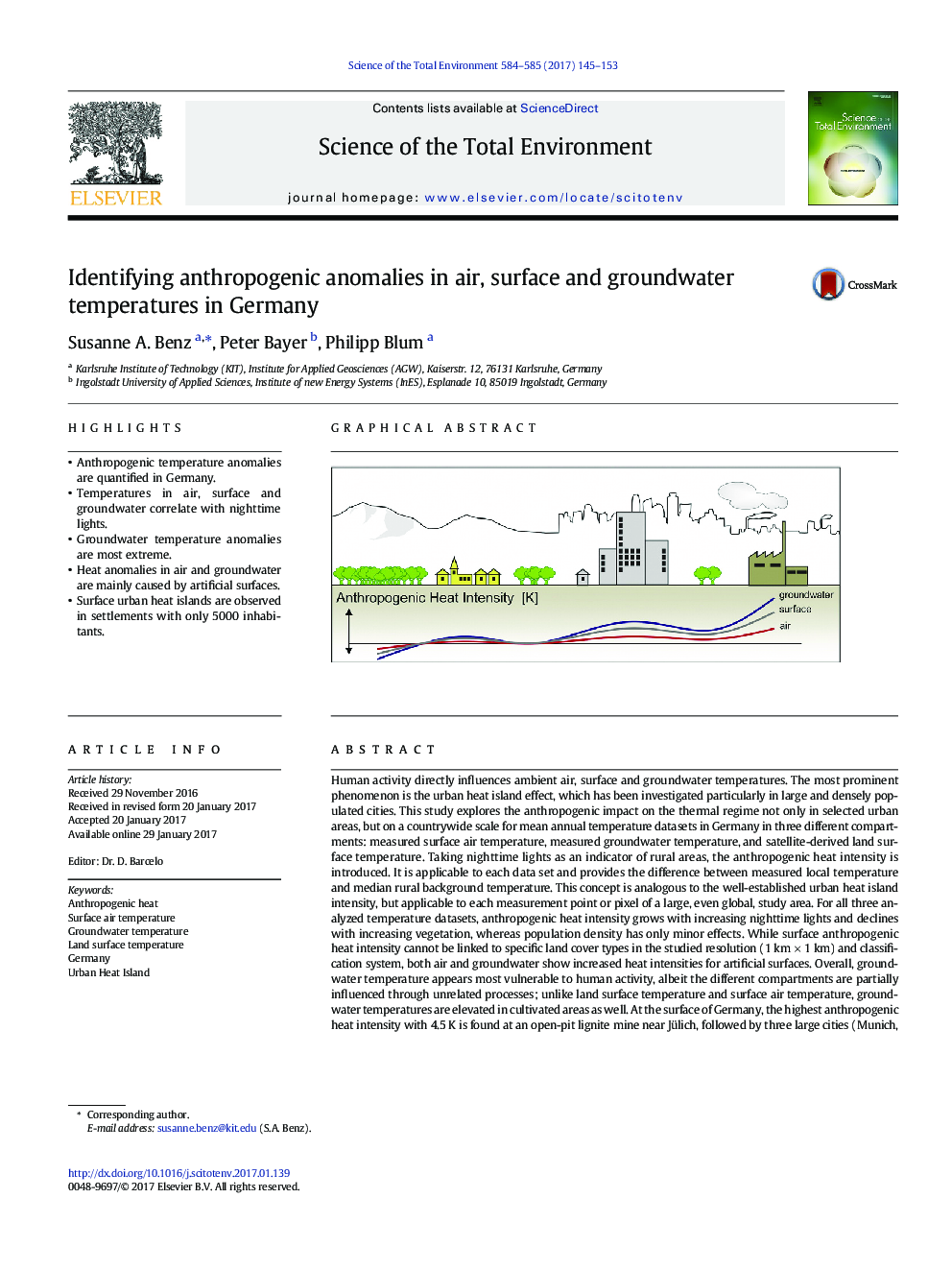| کد مقاله | کد نشریه | سال انتشار | مقاله انگلیسی | نسخه تمام متن |
|---|---|---|---|---|
| 5751858 | 1619708 | 2017 | 9 صفحه PDF | دانلود رایگان |
- Anthropogenic temperature anomalies are quantified in Germany.
- Temperatures in air, surface and groundwater correlate with nighttime lights.
- Groundwater temperature anomalies are most extreme.
- Heat anomalies in air and groundwater are mainly caused by artificial surfaces.
- Surface urban heat islands are observed in settlements with only 5000 inhabitants.
Human activity directly influences ambient air, surface and groundwater temperatures. The most prominent phenomenon is the urban heat island effect, which has been investigated particularly in large and densely populated cities. This study explores the anthropogenic impact on the thermal regime not only in selected urban areas, but on a countrywide scale for mean annual temperature datasets in Germany in three different compartments: measured surface air temperature, measured groundwater temperature, and satellite-derived land surface temperature. Taking nighttime lights as an indicator of rural areas, the anthropogenic heat intensity is introduced. It is applicable to each data set and provides the difference between measured local temperature and median rural background temperature. This concept is analogous to the well-established urban heat island intensity, but applicable to each measurement point or pixel of a large, even global, study area. For all three analyzed temperature datasets, anthropogenic heat intensity grows with increasing nighttime lights and declines with increasing vegetation, whereas population density has only minor effects. While surface anthropogenic heat intensity cannot be linked to specific land cover types in the studied resolution (1 km Ã 1 km) and classification system, both air and groundwater show increased heat intensities for artificial surfaces. Overall, groundwater temperature appears most vulnerable to human activity, albeit the different compartments are partially influenced through unrelated processes; unlike land surface temperature and surface air temperature, groundwater temperatures are elevated in cultivated areas as well. At the surface of Germany, the highest anthropogenic heat intensity with 4.5 K is found at an open-pit lignite mine near Jülich, followed by three large cities (Munich, Düsseldorf and Nuremberg) with annual mean anthropogenic heat intensities > 4 K. Overall, surface anthropogenic heat intensities > 0 K and therefore urban heat islands are observed in communities down to a population of 5000.
129
Journal: Science of The Total Environment - Volumes 584â585, 15 April 2017, Pages 145-153
